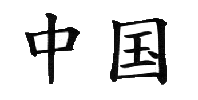China Beat Archive
Date of this Version
6-18-2008
Document Type
Article
Citation
June 18, 2008 in The China Beat http://www.thechinabeat.org/
Abstract
Two weeks ago, the nineteenth anniversary of the suppression of the student movement of 1989 passed. Although the anniversary passed more quietly than usual, Tian’anmen 天安門 keeps its special place in our minds and few places in China can compete with the stature of the gate and the square that bears its name.
For five hundred years, the gate was an important site for official functions during the Ming and Qing dynasties, and following the fall of the empire, the gate has grown in prominence. When the republic was inaugurated in 1912, the first president Yuan Shikai used the gate as a venue for the kind of public pageantry that was expected of a modern nation state. On May 4, 1919, the students of Peking University chose the gate as the stage of a forceful protest against the Treaty of Versailles, and they were followed by a number of demonstrations well into the 1940s. It was here that Mao Zedong proclaimed the founding of the People’s Republic of China in October 1949 (although, as Michael Schoenhals has pointed out in a lengthy footnote to a working paper on Chinese language and politics the notion that the Chairman said there and then that China had “stood up” is a much recycled myth). Ten years later, the expansion of Tian’anmen Square took place, which created the massive monument-filled plaza we know today. The gate also adorns the Chinese national coat of arms, and every Chinese schoolchild can recite the patriotic verse, Wo ai Beijing, Tian’anmen (“I love Beijing, Tian’anmen”).
Included in
Asian History Commons, Asian Studies Commons, Chinese Studies Commons, International Relations Commons


Comments
Copyright June 18, 2008 P. K. Cassel. Used by permission.